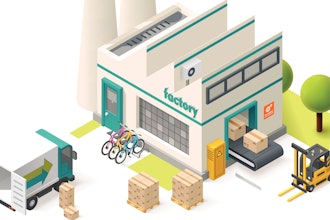UNITED NATIONS (AP) -- The Obama administration called hydrofluorocarbons widely used in refrigerators and air conditioners "a very significant" threat to climate change Monday, saying it welcomed talks to reduce the greenhouse gases but stopping short of joining a proposal that seeks to accomplish that goal.
Cutting how much of the gases is made and used is preferable to a full ban because the United States believes that reasonable "alternatives exist today for some uses of HFCs, but not all," a senior State Department official, Daniel Reifsnyder, said in a letter to U.N. Ozone Secretariat Marco Gonzalez.
The U.N.'s ozone treaty, known as the Montreal Protocol, has promoted using HFCs as an ozone-friendly chemical, to replace chlorofluorocarbons, that have now been virtually eliminated. But while HFCs do not harm the ozone layer, they are especially potent greenhouse gases -- up to 10,000 times as strong as carbon dioxide.
The State Department issued a separate statement "expressing interest in a proposal that calls for amending the Montreal Protocol to phase down consumption and production of hydrofluorocarbons." It also said the U.S. "welcomes discussions of this issue" at the next ozone treaty discussions slated for July in Geneva, Switzerland.
The small island nations of Micronesia and Mauritius petitioned last week to alter the Montreal Protocol by cutting HFCs by 90 percent by 2030. But citing the limitations of "the brief time available to us" to study the matter, the Obama administration stopped short of endorsing the other nations' effort, which would effectively turn the Montreal Protocol into something of a climate treaty, rivaling the Kyoto climate treaty, which expires in 2012.
Reifsnyder, a deputy assistant secretary of state for environment and sustainable development, said the U.S. needs more time to study the implications of replacing most HFCs with something both ozone-and climate-friendly.
The Montreal Protocol essentially eliminated the use of CFCs blamed for damaging the ozone layer over Antarctica. It's unclear how that would work in conjunction with Kyoto, the world's climate treaty, which now regulates HFCs and was rejected by the Bush administration. Negotiations to replace Kyoto are to be concluded in December in Denmark.
Officials at the State Department, the Environmental Protection Agency and the Defense Department had all backed a phase-down of HFCs, but the idea ran into some resistance in the White House during a year when the administration is considering what sort of negotiating chips it might have during global talks this year to craft a Kyoto treaty successor.
The U.S. ran out of time "to complete the analysis needed to understand the potential impacts of such an approach or to consider how amending the Montreal Protocol to address HFCs would affect negotiations ... with respect to the post-2012 period," wrote Reifsnyder.
"We plan to continue actively studying and analyzing this issue," he wrote.
Reifsnyder had called HFCs "a very significant further threat to the climate system because of their high global warming potentials," which is the term used to measure the potency of greenhouse gases.
"Thus, we risk solving one global environmental problem while possibly exacerbating another unless other alternatives can be found," he said. "We are conscious that alternatives exist today for some uses of HFCs, but not all. For this reason, seeking to phase down the consumption and production of HFCs would be preferable to phasing out such consumption and production."
Proponents of the idea were disappointed.
"We cannot hesitate as a third of our future global warming emissions hang in the balance. We need action -- and U.S. leadership -- this year," said Alexander von Bismarck, executive director of the Environmental Investigation Agency, a nonprofit watchdog group in Washington that first pitched the idea two years ago.
Only about 2 percent of the globe's climate-warming gases are currently HFCs, but those are expected to grow to up to about a third of all greenhouse gases about two to four decades from now because of their promotion for a host of household goods that once used CFCs.
Some manufacturers, however, have already begun to replace HFCs with so-called natural refrigerants such as hydrocarbons, ammonia or carbon dioxide. Companies like Delaware-based DuPont Fluorochemicals, one of only five U.S. manufacturers of HFCs, say they a global "phase-down" of HFCs to about one-fifth of their current use.
The U.S. market for HFCs is estimated at $1 billion, about a third to one-half what it is globally.
Micronesia and Mauritius had petitioned Gonzalez to include an HFCs phase-out in the ozone treaty discussions planned for November, calling it a dire matter of survival for their island inhabitants. The deadline for making such a proposal was this week.
In contrast to their proposed phase-down, Reifsnyder noted that a preliminary analysis is based on "stepwise reductions" which would reducing HFCs by 85 percent by 2039.
The U.S. Environmental Protection Agency in April determined that HFCs were one of six greenhouse gases endangering human health and welfare, a ruling that could eventually lead to mandatory reductions in the U.S. under the Clean Air Act. Legislation before the House already calls for U.S. reductions in HFCs.
Senate Foreign Relations Chairman John Kerry said Monday that "HFCs are significantly more powerful greenhouse gases than carbon dioxide, and the damage is only going to grow if we don't act in the short term."
The Democrat said in reaction to the administration's letter that President Barack Obama now "clearly recognizes the impact of HFCs, and I'm confident he'll work with Congress to find a way to address this growing challenge in the best and quickest way possible."






















